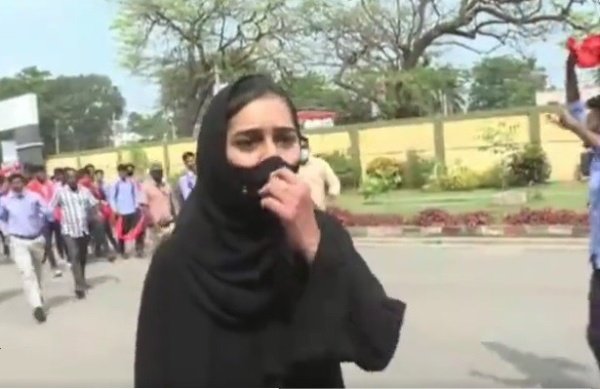On International Women’s Day we take some time to ponder the issue of hijab and the media’s approach to it.
When the issue was raging on national media, we were pondering if anything needed to be said about it on inmathi.com. Hijab was a non-issue in Tamil Nadu and will remain one, one hopes. Barring a BJP poll worker objecting to voters with hijab during the recent urban local body polls, no one has seen it as an issue in Tamil Nadu. We decided that since nothing was happening in any case in Tamil Nadu, we needn’t write about it.
Hijab was a classic pseudo event that inmath.com is wary of. Whatever is staged for media consumption has dubious value.
Hijab was orchestrated by vested interests, staged for the media to create a certain effect, and amplified for a certain period of time. Media gladly joined in and kept the issue alive.
Hijab was orchestrated by vested interests, staged for the media to create a certain effect, and amplified for a certain period of time. Media gladly joined in and kept the issue alive.
Without UP elections, would hijab have happened at all? Probably not. Would Sangh outfits have amplified it, if not created it? Probably not. Would radical Islamic outfits have tried to make hijab a show of defiance if there was no media? Probably not, again. What was not a naturally occurring event, a trend or a spontaneous movement need not be worthy of our attention, we decided.
But what is intriguing is the quick change in context. Not too long ago, the hijab, or more perhaps the burqa, was a sign of oppression of women for progressives. The 20th century’s big ideas were secular nationalism and progressivism. And hijab meant subjugation of women. It conveyed that half of humanity needed to be kept under wraps. A public dress code meant a lack of freedom.
Secular thinking across the Muslim world sought to overturn religious codes. The Turks may have carried Islam everywhere but they were also among the most stridently secular in the last century. Pork and wine used to be freely available in Istanbul cafes during Ramadan. Residents would shoo away early morning drumbeaters waking up people to eat so they could fast after sunrise. Many Istanbul residents preferred to sleep and couldn’t be bothered. In a video on YouTube, Egyptian leader Nasser is seen derisively mocking religious preachers for advocating the veil.
In a couple of decades, however, the scene has changed. Erdogan is changing Turkey. The veil has staged a comeback there. An Erdogan-like Modi is changing India.
On the Karnataka issue, progressive opinion writers started arguing that whether Muslim women should wear the hijab was not an issue. They said speaking about it takes the focus away from what the Sangh was trying to do. What needed to be talked about was the attack on religious freedom, they said.
For sure, the BJP or Sangh outfits don’t really care about Muslim women’s liberation. For them women’s rights is a stick to curb minorities. But widespread wearing of hijab or even the burqa is a recent phenomenon. It has coincided with the global resurgence of Islamic fundamentalism. In India, it is fuelled in-part by the polarization the BJP has engineered.
Writer Salma has argued that the hijab, or even the veil, has helped Muslim women get educated. Otherwise conservative families have allowed their daughters to get educated because of the hijab and the burqa, she has said. This may be a practical observation but doesn’t quite take a stand on what it means to have dress codes.
Dress codes, especially for women, arise from the concept of modesty. Women are expected to be modest in their behavior and men, too, by religions. It’s a conservative point of view and half of humanity or probably more would advocate it. Modesty is a Quranic advice and so is it of other religions. Modesty, however, is often a byword for force and control.
On camera, in Karnataka, burqa wearing girls were presenting another view. They were forcefully advocating their right to wear their religious dress. For the college students wearing burqa, it was an expression of defiance and an assertion of their rights. It was a sign that they wanted to practice their religion, come what may. It surely wasn’t modest behavior. So, in a curious twist, women wearing burqa were not really behaving as per modesty codes. They were showing they were not subjugated.
Radical Islamic outfits that are increasingly influencing the discourse among Muslim youth have effectively established that religious rights should be fought for and achieved. It’s a thinking shared by the Sangh, too.











